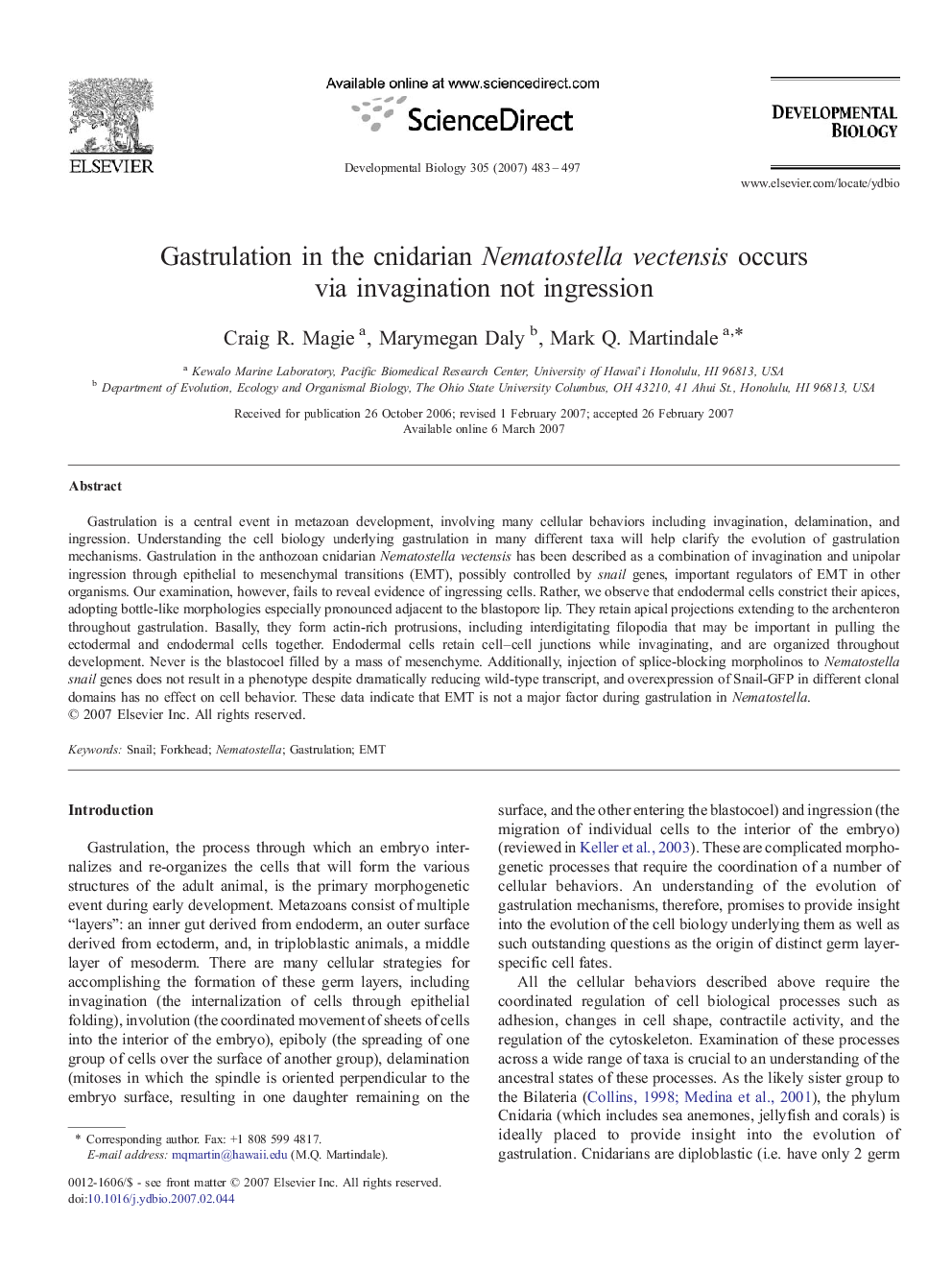| کد مقاله | کد نشریه | سال انتشار | مقاله انگلیسی | نسخه تمام متن |
|---|---|---|---|---|
| 2175330 | 1093837 | 2007 | 15 صفحه PDF | دانلود رایگان |
عنوان انگلیسی مقاله ISI
Gastrulation in the cnidarian Nematostella vectensis occurs via invagination not ingression
دانلود مقاله + سفارش ترجمه
دانلود مقاله ISI انگلیسی
رایگان برای ایرانیان
کلمات کلیدی
موضوعات مرتبط
علوم زیستی و بیوفناوری
بیوشیمی، ژنتیک و زیست شناسی مولکولی
بیولوژی سلول
پیش نمایش صفحه اول مقاله

چکیده انگلیسی
Gastrulation is a central event in metazoan development, involving many cellular behaviors including invagination, delamination, and ingression. Understanding the cell biology underlying gastrulation in many different taxa will help clarify the evolution of gastrulation mechanisms. Gastrulation in the anthozoan cnidarian Nematostella vectensis has been described as a combination of invagination and unipolar ingression through epithelial to mesenchymal transitions (EMT), possibly controlled by snail genes, important regulators of EMT in other organisms. Our examination, however, fails to reveal evidence of ingressing cells. Rather, we observe that endodermal cells constrict their apices, adopting bottle-like morphologies especially pronounced adjacent to the blastopore lip. They retain apical projections extending to the archenteron throughout gastrulation. Basally, they form actin-rich protrusions, including interdigitating filopodia that may be important in pulling the ectodermal and endodermal cells together. Endodermal cells retain cell-cell junctions while invaginating, and are organized throughout development. Never is the blastocoel filled by a mass of mesenchyme. Additionally, injection of splice-blocking morpholinos to Nematostella snail genes does not result in a phenotype despite dramatically reducing wild-type transcript, and overexpression of Snail-GFP in different clonal domains has no effect on cell behavior. These data indicate that EMT is not a major factor during gastrulation in Nematostella.
ناشر
Database: Elsevier - ScienceDirect (ساینس دایرکت)
Journal: Developmental Biology - Volume 305, Issue 2, 15 May 2007, Pages 483-497
Journal: Developmental Biology - Volume 305, Issue 2, 15 May 2007, Pages 483-497
نویسندگان
Craig R. Magie, Marymegan Daly, Mark Q. Martindale,